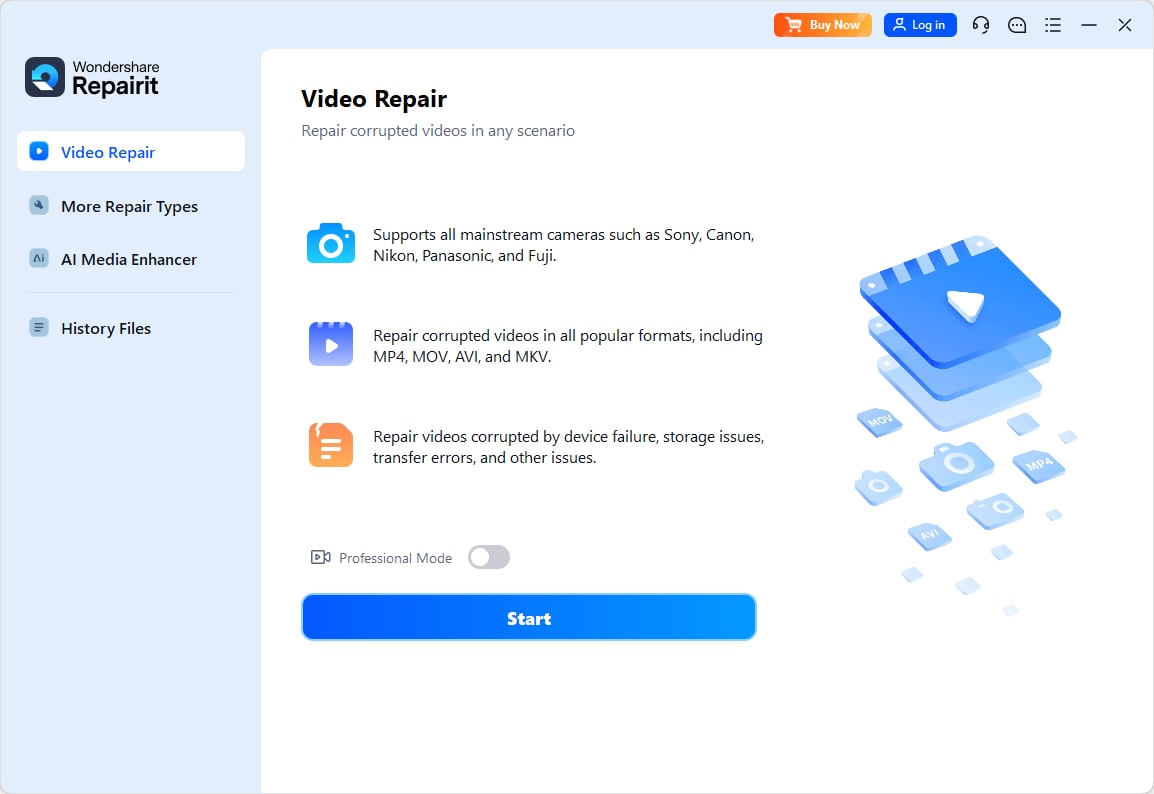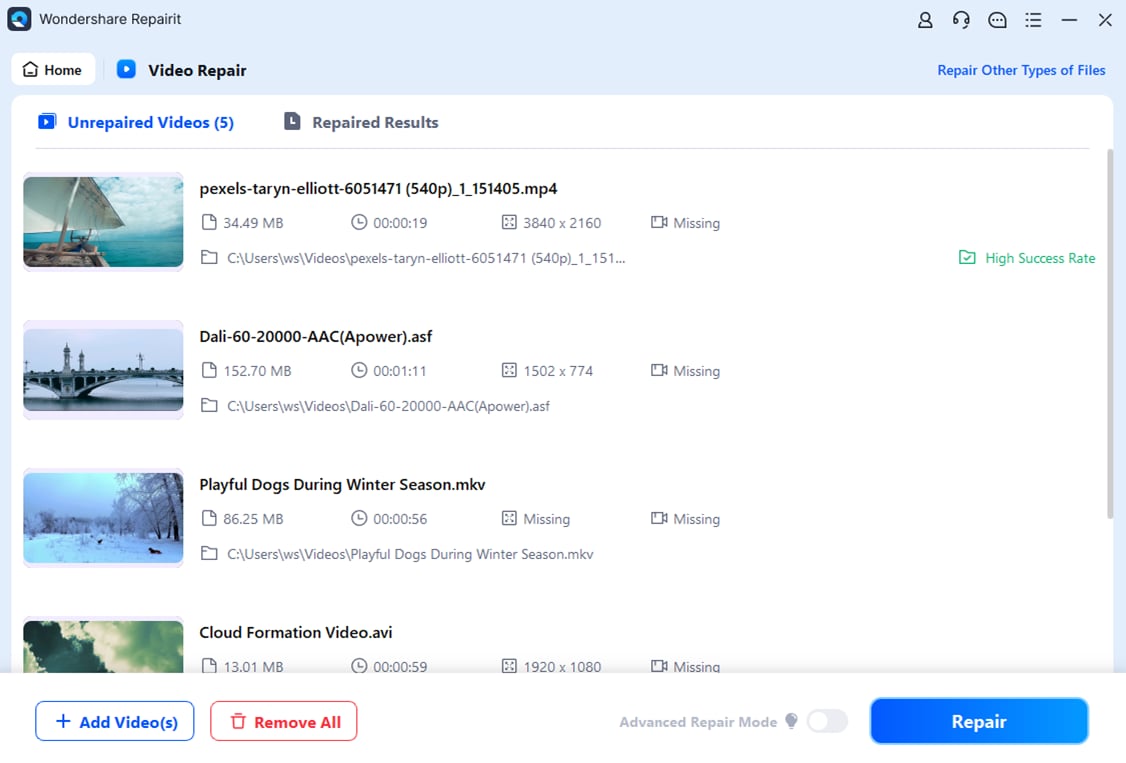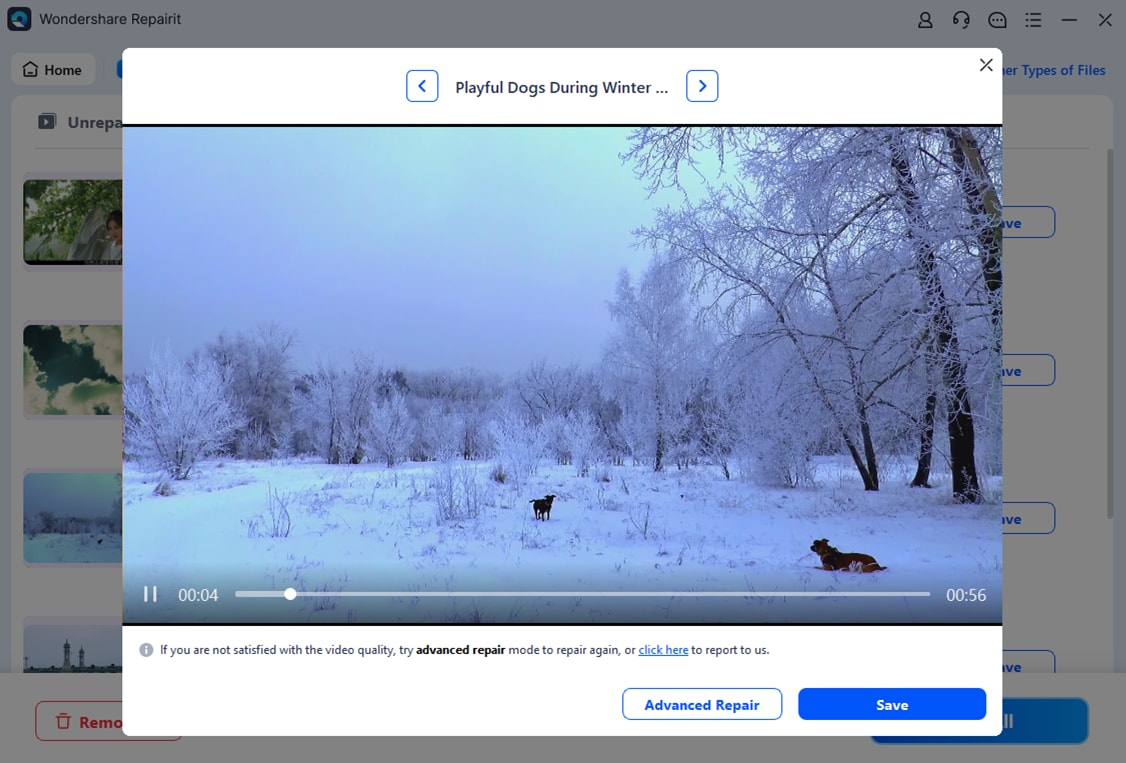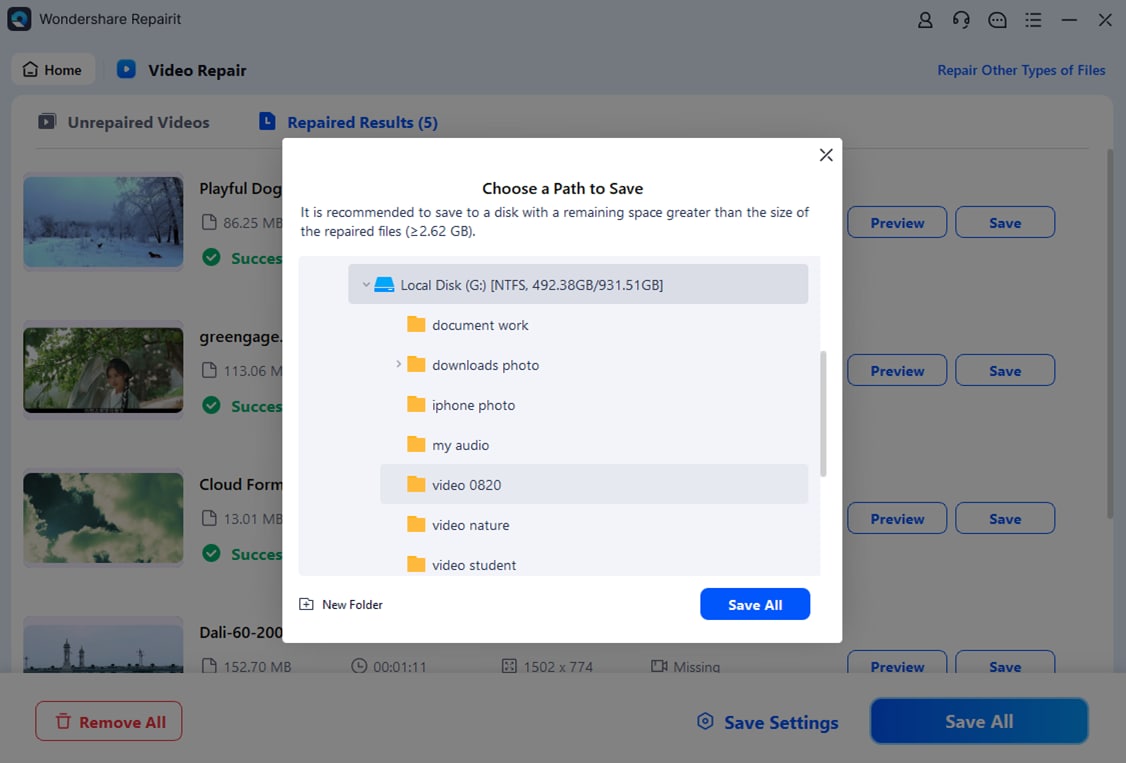"Getting a Video Memory Management Internal BSOD – Yesterday when playing around in my Premiere Pro project file, and previewing something, as soon as I clicked play, I got the video memory management internal blue screen of death." - Reddit user
Imagine you're working on something important, and just as you're about to finish, your PC suddenly shuts down. When you restart it, all you see is a blue screen with the error message: Video Memory Management Internal and a bug check value: 0x0000010E.
It’s frustrating and confusing, especially if you’re unsure how to fix it. Don’t worry—we’ve got you! This comprehensive post will show the best solutions to resolve this error. Let’s get started.
In this article
Part 1. What is the BSOD "Video Memory Management Internal" Error?
The Video Memory Management Internal error is a common Blue Screen of Death (BSOD) issue in Windows 10. Many users experience this error while running games or other graphics-intensive programs. This error can cause your PC to restart unexpectedly and lead to further problems.
Here are some common reasons:
- Your graphics driver may be old or incompatible with your system. A damaged or corrupted driver can also cause video memory errors.
- Physical problems with your graphics card, such as overheating or damage, can trigger this error.
- Problems with your computer’s video memory can lead to crashes and blue screens.
- Certain programs, like games or editing tools, may not work well with your system and cause the error.
- Incomplete or buggy Windows updates can sometimes lead to this BSOD error.
- If your system or GPU is overclocked, it can cause instability and lead to this issue.
- Malware infections may affect system files, leading to video memory problems.
- Issues with your RAM or hard drive can sometimes cause this error to appear.
Part 2. 6 Fixes for Blue Screen “Video Memory Management Internal” Problem
Before trying the fixes in this guide, start with these basic troubleshooting steps:
- Restart your PC. This can fix temporary bugs and glitches.
- Update your BIOS from the manufacturer’s website.
- Disable overclocking if you’ve enabled it.
- Run your games in Windowed Mode.
If these steps don’t fix the BSOD, move on to the more specific solutions below.
Fix #1: Update Graphics Driver
Your graphics driver helps translate commands into visuals on your screen. If it’s outdated or faulty, it can cause issues like the Video Memory Management Internal blue screen error. To fix this, update your driver.
Here are the steps:
Step 1: Press Windows + X, then select Device Manager.

Step 2: Double-click Display adapters. Next, right-click your graphics driver and choose Update driver.

Step 3: Select Search automatically for drivers.

Step 4: If an update is available, install it and restart your computer.
If updating didn’t fix the issue, you can try rolling back to a previous driver:
Step 1: Double-click Display adapters, then right-click your driver and hit Properties.

Step 2: Go to the Driver tab and click Roll Back Driver.
Step 3: Follow the on-screen instructions and click OK.

If this doesn’t resolve the error, try the next fix.
Fix #2: Use Compatibility Mode to Open Applications
Compatibility Mode allows older software to run smoothly on newer versions of Windows. If you’re getting the Video Memory Management Internal error with a specific program, running it in Compatibility Mode can help avoid conflicts with your video memory.
How to use compatibility mode? Follow the below steps:
Step 1: Right-click the program and select Properties.

Step 2: Go to the Compatibility tab.
Step 3: Tick the box next to Run this program in compatibility mode for.
Step 4: Select a Windows version. You can pick an older version of Windows from the dropdown menu, then click OK and Apply.

Step 5: If you’re unsure which version to choose, click Run compatibility troubleshooter.

Fix #3: Run System File Checker
Running the System File Checker (SFC) is an effective fix for the Video Memory Management Internal blue screen error. Damaged or missing system files can result in various issues, including this error. By using SFC, you can scan and repair these files.
Follow the below steps to run SFC:
Step 1: Press Windows + S, type cmd, and hit Run as Administrator.

Step 2: Type sfc /scannow in the Command Prompt and hit Enter.

Step 3: The scan will begin, checking for and fixing any corrupted system files.
Step 4: Wait until the procedure is complete. Then enter the syntax DISM /Online /Cleanup-Image /RestoreHealth.

Step 5: If no further action is needed, close the window and see if the error is resolved.
Fix #4: Check Hard Drive
A faulty or corrupted hard drive can cause the Video Memory Management Internal error. You can scan your drive for errors using CHKDSK in Command Prompt. However, this may mark bad sectors and prevent Windows from saving data there, possibly leading to data loss. Be sure to back up your data or use recovery software before proceeding.
See the steps below to run CHKDSK:
Step 1: Access the Command Prompt as an administrator.
Step 2: Type chkdsk /f /r D: (replace D: with your designated drive letter) and hit Enter.

Step 3: Allow the scan to finish. Then, restart your device system and see if the issue is resolved.
Fix #5: Check RAM
Faulty RAM can also cause the Video Memory Management Internal error. To check if your RAM is the issue, you can utilize the built-in Windows Memory Diagnostic tool. This can help you determine the source of the problem and take the necessary steps to fix it.
Step 1: Hit Windows + R to access the Run box.
Step 2: Type mdsched.exe and click OK.

Step 3: Select Restart now and scan for problems (recommended).

Important: Save your work before restarting.
Windows will run the test and reboot your PC once it's done. Check the results on your desktop. If no notification appears, open Event Viewer:
Step 1: Right-click the Start menu and find the Event Viewer.
Step 2: Click Windows Logs and System, then Find.

Step 3: Type memory diagnostic and click Find Next.

If it shows "no errors," your RAM is fine, and you can try other fixes. If an error is found, you may need to replace your RAM. Check if your device is under warranty or contact the manufacturer for support.
Fix #6: Reset Windows
If the previous methods don't work, you may need to reset Windows. This will return your PC to its default settings, removing apps, files, drivers, and other potential causes of the Video Memory Management Internal error.
You can try a system restore if you have a restore point saved. If not, consider refreshing or resetting your PC, but be aware this will erase your system files. Make sure to tightly back up important data before continuing.
Follow these steps:
Step 1: Press Windows + I and search Recovery.
Step 2: Click Reset this PC.

Step 3: Choose Remove everything (recommended for a thorough reset).

Step 4: Select Local reinstall.

Step 5: If needed, adjust settings by selecting Change Settings (you can choose to delete files or clean all data).
Step 6: Once you're ready, click Confirm and restart your PC.
Part 3. How to Fix Corrupted Video Files Due to BSOD Video Memory Management Internal?
BSOD errors, including the Video Memory Management Internal error, can cause your system to crash unexpectedly. Thus leading to data corruption. This includes video files that were in use when the error occurred. If you experience a crash while editing, playing, or storing video files, these files may become damaged and unusable.
To fix corrupted video files caused by such errors, you can use the best repair tool: Repairit Video Repair. This tool is designed to repair damaged video files, regardless of the format, and restore them to a playable state. You can easily download and use it to repair corrupted video files caused by BSOD issues.
Here are some of its key features:
- Repairit fixes corrupted video files in over 20 formats, including MP4, MOV, MKV, and AVI, even those affected by BSOD errors.
- It restores videos damaged during shooting, downloading, transferring, editing, or converting, including those disrupted by BSOD.
- You can repair multiple damaged videos at once, regardless of size or format.
- Repairit fixes corrupted videos in HD and 8K resolution with a high success rate.
- After repair, you can preview the video to ensure it meets your quality standards before saving it.
- It enhances video quality with features like stabilization and noise reduction.
Adhere to the following instructions to fix corrupted video files due to BSOD Video Memory Management Internal using Repairit:
Step 1: Run the Repairit Video Repair tool. Add the corrupted videos due to BSOD Video Memory Management Internal by clicking the +Add button.

Step 2: Select Repair to start fixing the damaged videos due to BSOD Video Memory Management Internal.

For severely damaged videos due to BSOD Video Memory Management Internal, select Advanced Repair. Upload a sample video to properly enhance the repair quality.

Step 3: You can preview the repaired videos before keeping them. If you think it's good enough, click Save and copy it in its saving location. Avoid saving it to its previous place to avoid repeating the same error again.

Fix Corrupted Video Files Due to BSOD Video Memory Management Internal

Conclusion
The "Video Memory Management Internal" BSOD can be frustrating, but it can be solved with the right steps. Begin by updating drivers, checking your hardware, and running diagnostics. If the issue continues, try resetting or reinstalling Windows. If your video files are corrupted, Repairit Video Repair can restore them with minimal data loss and improve their quality. These solutions can help resolve the problem and prevent future BSOD errors.
FAQ
What is the relationship between video memory and the "Video Memory Management Internal" error?
Your graphics card uses video memory (VRAM) to store graphical data. This error occurs when the system encounters a problem while managing VRAM. This is either due to insufficient memory, corruption, or conflicts between the GPU and system memory.Should I replace my video card if I encounter this error frequently?
Frequent errors could indicate a hardware issue with the video card. If troubleshooting steps don't resolve the problem, replacing the video card might be necessary.How can I prevent the "Video Memory Management Internal" error from happening in the future?
To prevent the "Video Memory Management Internal" error, you can do the following steps:1. Keep your graphics drivers and system up to date.
2. Avoid overheating graphics drivers and systems by ensuring proper ventilation.
3. Regularly perform system maintenance like disk cleanups and memory diagnostics.


 ChatGPT
ChatGPT
 Perplexity
Perplexity
 Google AI Mode
Google AI Mode
 Grok
Grok
